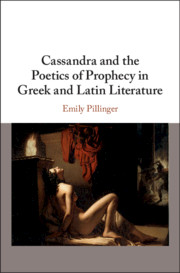Book contents
- Cassandra and the Poetics of Prophecy in Greek and Latin Literature
- Cassandra and the Poetics of Prophecy in Greek and Latin Literature
- Copyright page
- Dedication
- Contents
- Acknowledgements
- Introduction
- Chapter 1 Understanding Too Much: Aeschylus’ Agamemnon
- Chapter 2 Rewriting Her-story: Euripides’ Trojan Women
- Chapter 3 A Scholarly Prophet: Lycophron’s Alexandra
- Chapter 4 Graeco-Roman Sibylline Scripts: Virgil’s Aeneid
- Chapter 5 Cassandra Translated: Seneca’s Agamemnon
- Conclusion
- Bibliography
- Index Locorum
- General Index
- References
Bibliography
Published online by Cambridge University Press: 22 March 2019
- Cassandra and the Poetics of Prophecy in Greek and Latin Literature
- Cassandra and the Poetics of Prophecy in Greek and Latin Literature
- Copyright page
- Dedication
- Contents
- Acknowledgements
- Introduction
- Chapter 1 Understanding Too Much: Aeschylus’ Agamemnon
- Chapter 2 Rewriting Her-story: Euripides’ Trojan Women
- Chapter 3 A Scholarly Prophet: Lycophron’s Alexandra
- Chapter 4 Graeco-Roman Sibylline Scripts: Virgil’s Aeneid
- Chapter 5 Cassandra Translated: Seneca’s Agamemnon
- Conclusion
- Bibliography
- Index Locorum
- General Index
- References
- Type
- Chapter
- Information
- Publisher: Cambridge University PressPrint publication year: 2019



